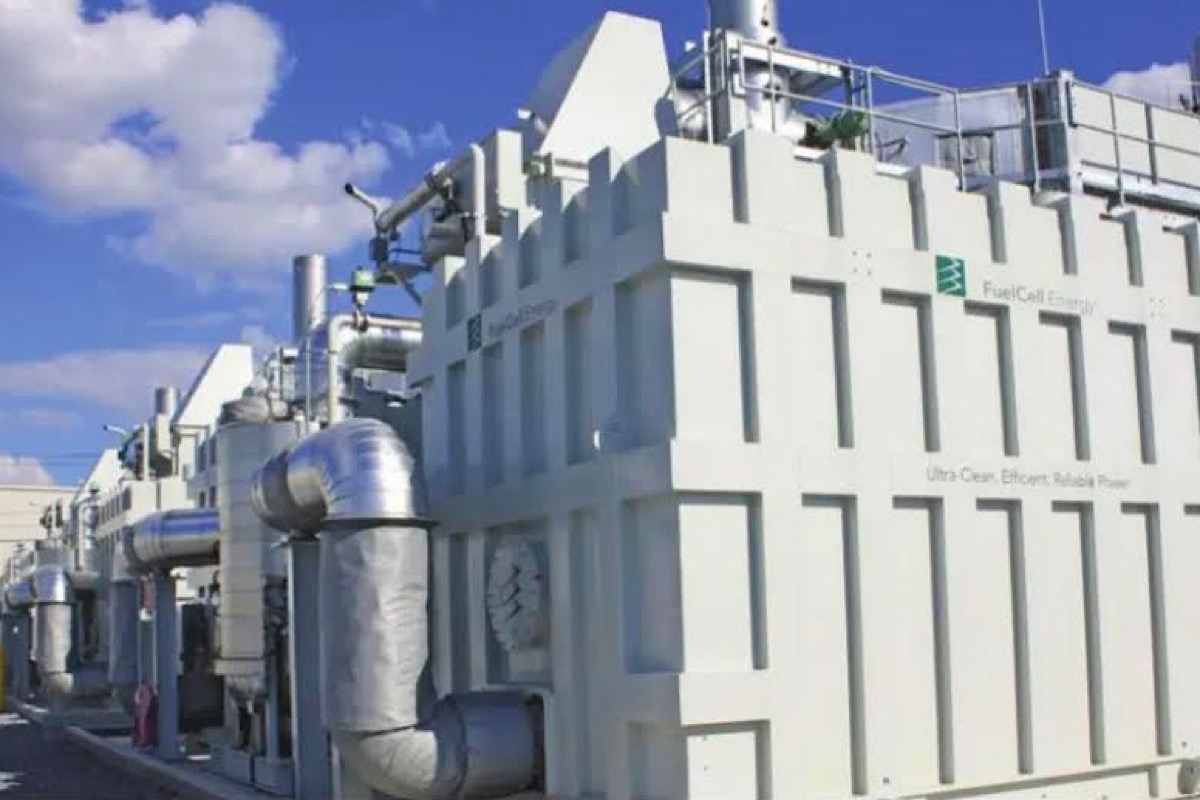A fuel cell uses the chemical energy of hydrogen or other fuels to produce electricity. If hydrogen is the fuel, the only products are electricity, water, and heat. Fuel cells can use a wide range of fuels and feedstock and can provide power for systems for a variety of applications such as transportation, industries and commercial/residential buildings.
Also for long term energy storage for the grid, fuel cells can operate at higher efficiencies and can convert the chemical energy in the fuel directly to electrical energy with efficiencies exceeding 60 per cent. Fuel cells have lower or zero emissions. Hydrogen fuel cells emit only water. Fuel cells are quiet during operation as they have few moving parts.
Advertisement
Fuel cells work like batteries, but they do not run down or need recharging. They produce electricity and heat as long as fuel is supplied. A fuel cell consists of two electrodes ~ a negative electrode (or anode) and a positive electrode (or cathode) ~ sandwiched around an electrolyte. A fuel, such as hydrogen, is fed to the anode, and air is fed to the cathode. In a hydrogen fuel cell, a catalyst at the anode separates hydrogen molecules into protons and electrons, which take different paths to the cathode.
The electrons go through an external circuit, creating a flow of electricity. The protons migrate through the electrolyte to the cathode, where they unite with oxygen and the electrons to produce water and heat. Fuel cells are classified primarily by the kind of electrolyte they employ.
This classification determines the kind of electrochemical reactions that take place in the cell, the kind of catalysts required, the temperature range in which the cell operates, the fuel required, and other factors.
These characteristics, in turn, affect the applications for which these cells are most suitable. There are several types of fuel cells currently under development, each with its own advantages, limitations, and potential applications. Let us learn more about the following types of fuel cells.
Polymer electrolyte membrane (PEM) fuel cells ~ also called proton exchange membrane fuel cells ~ deliver high power density and offer the advantages of low weight and volume compared with other fuel cells. PEM fuel cells use a solid polymer as an electrolyte and porous carbon electrodes containing a platinum or platinum alloy catalyst. They need only hydrogen, oxygen from the air, and water to operate.
They are typically fuelled with pure hydrogen supplied from storage tanks or reformers. Alkaline fuel cells (AFCs) were one of the first fuel cell technologies developed, and they were the first type widely used in the US space program to produce electrical energy and water onboard spacecraft.
These fuel cells use a solution of potassium hydroxide in water as the electrolyte and can use a variety of non-precious metals as a catalyst at the anode and cathode. In recent years, novel AFCs that use a polymer membrane as the electrolyte have been developed.
These fuel cells are closely related to conventional PEM fuel cells, except that they use an alkaline membrane instead of an acid membrane. The high performance of AFCs is due to the rate at which electrochemical reactions take place in the cell.
They have also demonstrated efficiencies above 60 per cent in space applications. Solid oxide fuel cells (SOFCs) use a hard, nonporous ceramic compound as the electrolyte. SOFCs are around 60 per cent efficient at converting fuel to electricity.
In applications designed to capture and utilize the system’s waste heat (co-generation), overall fuel use efficiencies could top 85 per cent. SOFCs operate at very high temperatures – as high as 1,000°C (1,830°F). High-temperature operation removes the need for precious-metal catalyst, thereby reducing cost. It also allows SOFCs to reform fuels internally, which enables the use of a variety of fuels and reduces the cost associated with adding a reformer to the system.
SOFCs are also the most sulphur-resistant fuel cell type; they can tolerate sulphur of several more orders of magnitude than other cell types can. In addition, they are not poisoned by carbon monoxide, which can even be used as fuel. This property allows SOFCs to use natural gas, biogas, and gases made from coal.
High temperature operation has disadvantages. It results in a slow startup and requires significant thermal shielding to retain heat and protect personnel, which may be acceptable for utility applications but not for transportation. The high operating temperatures also place stringent durability requirements on materials.
The development of low-cost materials with high durability at cell operating temperatures is the key technical challenge facing this technology. Scientists are currently exploring the potential for developing lower-temperature SOFCs operating at or below 700°C that have fewer durability problems and cost less. Lower-temperature SOFCs have not yet matched the performance of the higher temperature systems, however, and stack materials that will function in this lower temperature range are still under development.
Reversible fuel cells produce electricity from hydrogen and oxygen and generate heat and water as by products, just like other fuel cells. However, reversible fuel cell systems can also use electricity from solar power, wind power, or other sources to split water into oxygen and hydrogen fuel through a process called electrolysis.
Reversible fuel cells can provide power when needed, but during times of high power production from other technologies (such as when high winds lead to an excess of available wind power), reversible fuel cells can store the excess energy in the form of hydrogen. This energy storage capability could be a key enabler for intermittent renewable energy technologies.
(The writer is Chair, Environment & Green Hydrogen Committee, PHD Chamber of Commerce & Industry, New Delhi and can be reached at jpglobalconsultinggroup@gmail.com)
